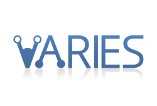- Published on 09 Jan 2015
- Project News
VARIES
The general goal of the VARIES project is to help Embedded Systems developers unleash the full potential of product variability in safety-critical Embedded Systems.
Product platform model
Many companies are confronted with the question how to offer a large product variety to their customers, without increasing costs and without losing product quality. Product quality entails the technical product performance, as well as the requirement to meet safety standards. Learning from the automotive industry, companies have discovered the benefits of product platforms as a way to offer a large amount of reliable product variants at a reasonable cost. In the VARIES project Barco, Vlerick and Sirris have joined forces, to build a quantitative model to determine the optimal strategic product platform decisions, such as how many platforms to develop, what these platforms should look like, and which products to derive from which platforms. After gaining insight on technical constraints, product and platform features and the product portfolio’s scope and characteristics, the analysis focused on capturing different costs impacted by the platform decisions – such as the cost of development, purchasing, inventory, certification and maintenance. The model shows that an integrated cost perspective is indispensable for correct platform decisions, and that multiple platforms can be cost beneficial. In short, the following principles can be applied: re-use components, segment the product portfolio, design bottom-up in the portfolio, and re-use schematics. The cost model can bring more insights on the optimal number of segments. The supply chain performance of current selected concepts has been assessed, and gave the following results: 12% less different components (24% less relative to the number of products), 5.3% less safety stock inventory and 46% less development time in a mature platform phase.
Reusability
Spicer, together with FMTC and Sirris, is looking for synergies between the off-highway, commercial and light vehicles, and power technologies market. Several characteristics of these markets drive variability decisions on technological level and on business level. Spicer strives for a high reusability of hardware and software components for the different safety-critical mechatronic systems that will be developed in future applications for these markets. The re-use is crucial: different variants of the hardware and software are needed to offer solutions for low, mid and high-end controllers with related attractive cost. Product variants are tested in a more efficient and effective way with a better coverage to obtain higher quality and reliability, and the effort of certification of product variants is decreasing. First results show that the number of re-use is heading towards 75% for different applications with simple variability management techniques.
Unified configuration
Autronica Fire and Security develops, produces and markets fire alarm systems for the professional global market. The products are safety critical and conform to a wide set of both general and country specific rules and regulations (IEC61508). Typical applications are large public buildings, off shore oil rigs and cruise liners. All installations are different and need specific configuration, both of the topological structure and of different system properties that control the system’s behavior. The main focus for Autronica in the VARIES project has been to simplify and unify the configuration of Autronica systems. The long term goal for Autronica is to have a common unified configuration process for all products. Autronica, together with SINTEF and ITU, have made a detailed model of the domain that covers two of the fire alarm systems, AutroSafe and Autroprime. VARIES technology, BVR, has then been applied on this model to automatically generate prototype configuration tools for the two systems from this common core model. This approach will simplify maintenance of the configuration tool and ensures that constraints due to market, regulations, safety etc. are taken care of in the produced configurations.
Consistent, integrated and continuous variability management
The Metso and VTT co-operation in VARIES focuses on product upgrade services and their variability management activities for the industrial automation product sector. Metso’s industrial automation systems are multi-technological systems that contain in-house developed and COTS hardware and software sub-systems. In some cases these systems must also meet the requirements of safety criticality (IEC61508). Automation systems have strict requirements on the system’s reliability, since all downtime is costly for factories. In such circumstances, all upgrades require special concern and planning, in a context of collaboration between the automation system’s provider and user, to minimize downtime in the user’s critical processes. In the VARIES project, with the help of VTT, Metso has increased automation in the planning process of upgrades and is now able to provide accurate life cycle plans, precise cost and change estimations for each Metso’s customers. This is remarkable improvement e.g. in ensuring the reliability of the customer’s automation system and in supporting the upgrade negotiations with the customer. With better upgrade services and more systematic variability management practices Metso can increase upgrade service business, by keeping the customer’s automation system up-to-date by gradually upgrading it based on a jointly (customer – provider) agreed plan and, therefore, avoid costly big-bang upgrades that might come as a surprise.
Website: www.varies.eu


